Bolt.New: Is This AI App Builder the Right Choice for You?
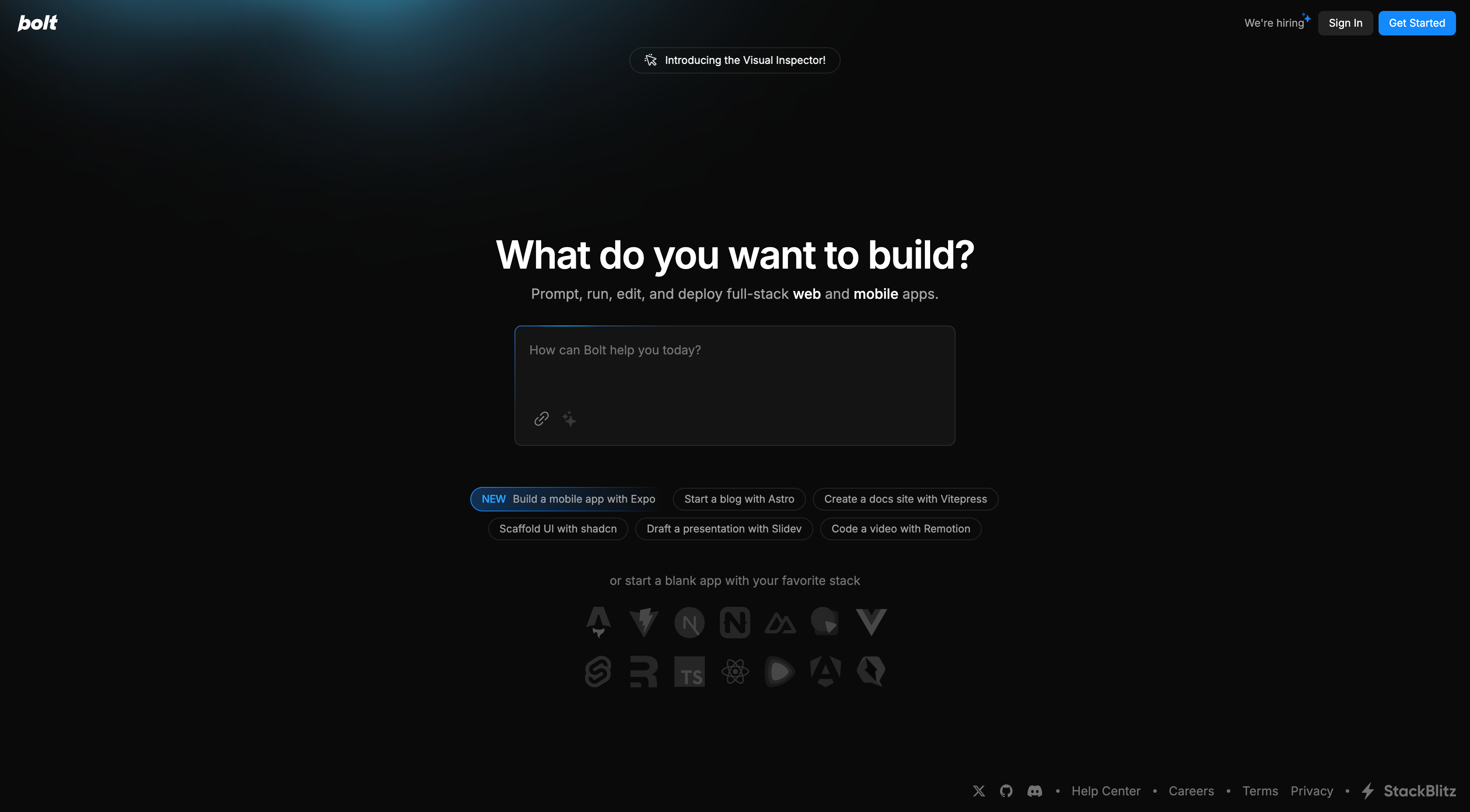
Bolt.New is an AI-powered app builder that simplifies development for both technical and non-technical users. With92% of US-based developers already using AI coding tools, the demand for AI-driven app creation is growing. Bolt.New enables rapid prototyping and quick no-code solutions, making it ideal for smaller projects. However, for users seeking more flexibility and full-stack control, no-code platforms like Momen offers a powerful alternative with built-in AI and deeper customization options, ensuring scalability for long-term projects.
What is Bolt.New?
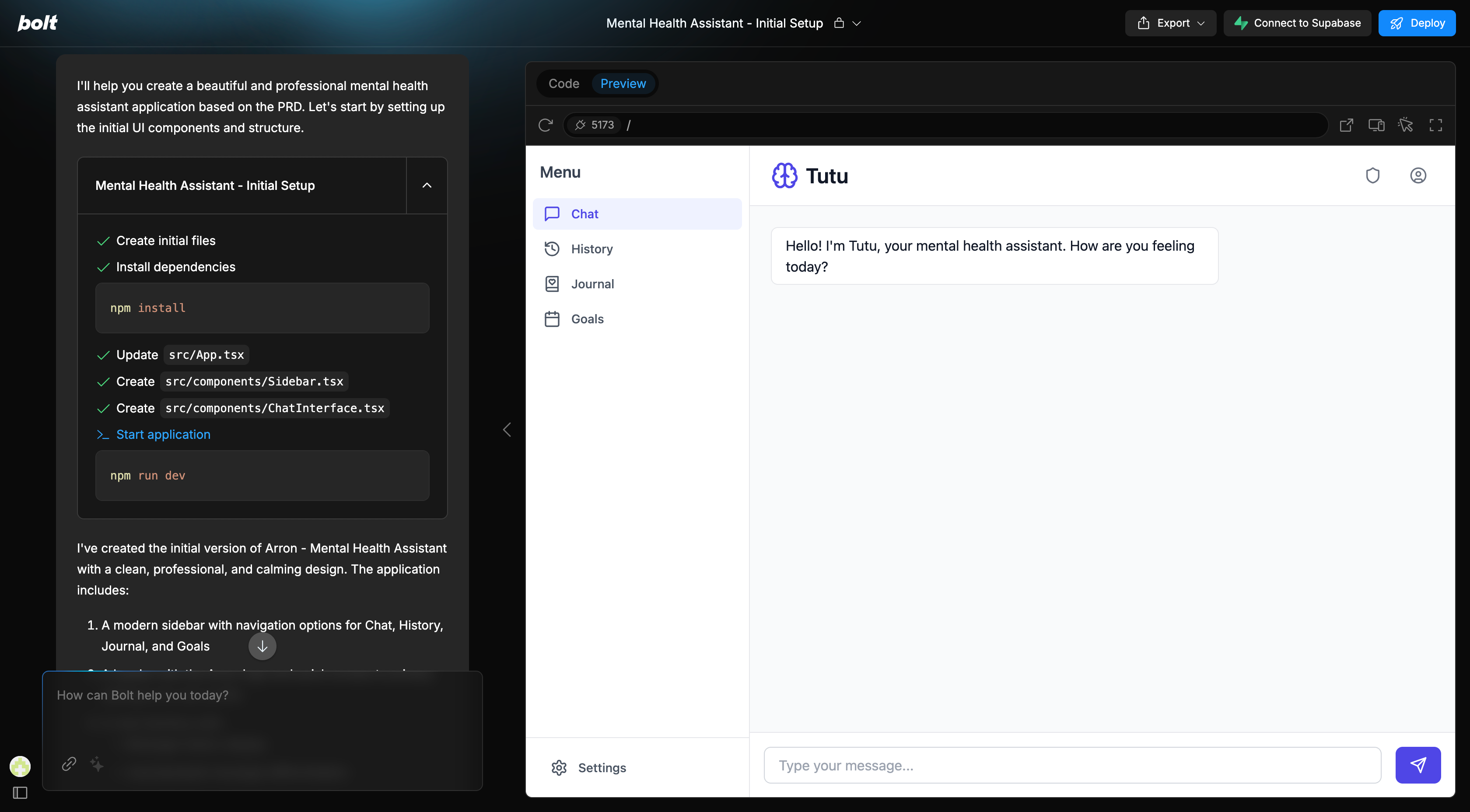
Overview of Bolt.New
Bolt.New, by StackBlitz, is an AI-powered web development platform that lets you build and deploy full-stack apps directly in the browser. Using Anthropic’s Claude for AI-powered code generation, it creates app foundations from simple prompts, eliminating complex setups. With WebContainers technology, it runs a full dev environment in your browser, allowing instant development and deployment with just a few clicks—no local installations needed. Bolt.New also ensures security by isolating environments, keeping your code and data protected.
How Bolt.New Leverages AI
Bolt.New AI stands out by automating complex tasks that traditionally require significant time and effort. Its AI-driven environment management handles setup and configuration, allowing you to focus on building your app instead of managing technical details. Automated package management ensures the correct libraries and versions are installed, preventing compatibility issues. Furthermore, AI-powered debugging tools detect and resolve errors efficiently, saving you time and effort.
Unlike traditional development methods, which often involve manual configuration and multi-step deployment, Bolt.New AI automates these processes. For example, it integrates with Netlify to enable immediate deployment. This approach aligns with the growing trend of generative AI in app development, where 82% of developers already use AI tools to enhance productivity. By streamlining workflows and automating repetitive tasks, Bolt.New empowers you to focus on creativity and innovation.
Key Features of Bolt.New
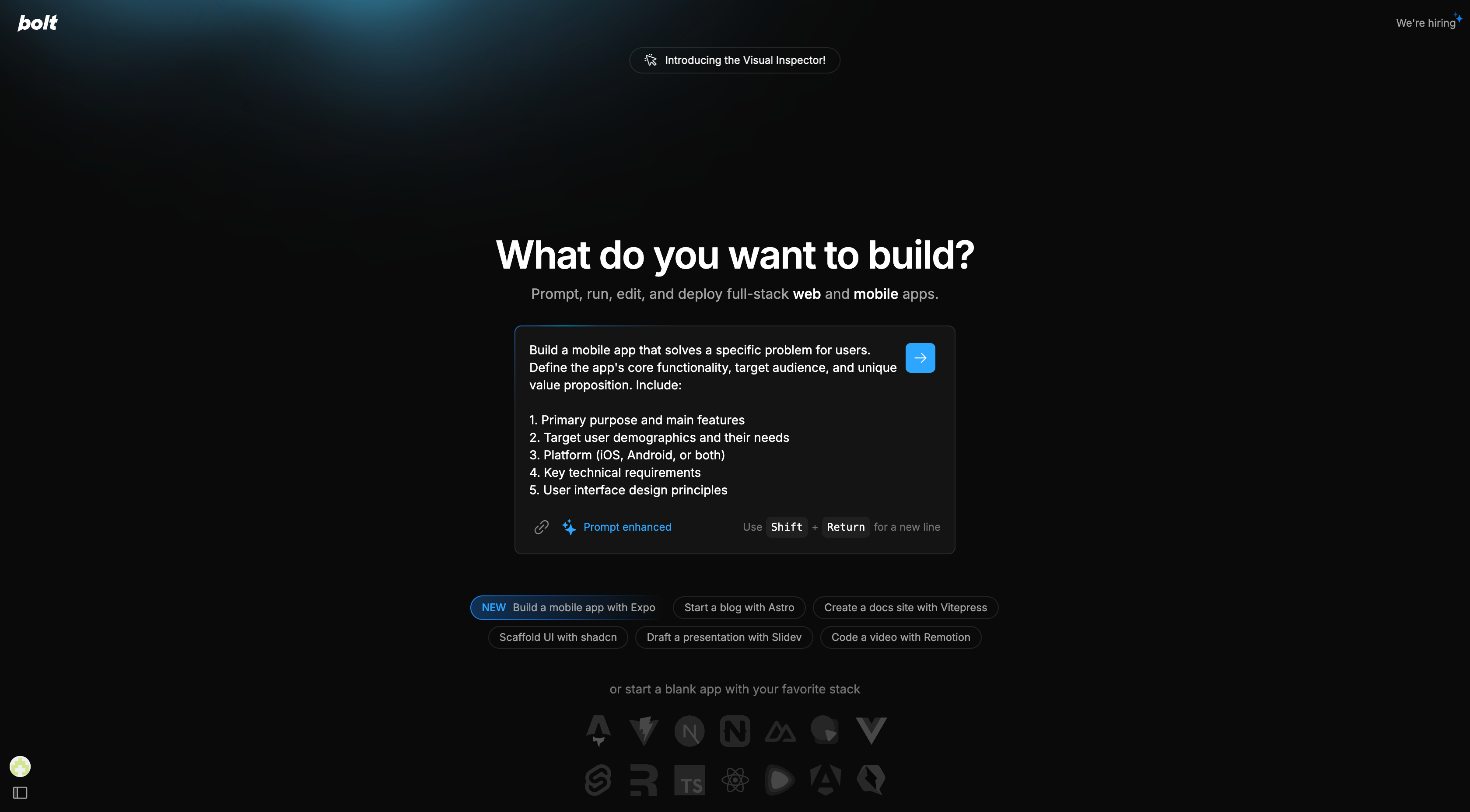
AI Code Generation
Bolt.New simplifies app development with its AI-powered code generation. This feature allows you to create the foundation of your app by simply describing your requirements. The tool translates your prompts into functional code, eliminating the need for extensive manual setup. For instance, you can quickly generate a web app for an e-commerce products page by specifying the core functionality you need. This makes it ideal for rapid prototyping and smaller projects.
Supports Popular Frameworks and Libraries: Bolt.New integrates seamlessly with frameworks like React, Vue, and Tailwind CSS, enabling you to set up projects effortlessly.
Accelerates Routine Tasks: The AI eliminates repetitive coding tasks, allowing you to focus on creativity and innovation.
Best for Prototyping: While it excels in speed and simplicity, it may not fully replace manual coding for production-ready apps or complex projects.
By leveraging AI for code generation, Bolt.New empowers you to bring your ideas to life faster than traditional methods.
Real-Time Error Detection
Mistakes are inevitable during app development, but Bolt.New minimizes their impact with real-time error detection. This feature identifies issues as you code and suggests fixes instantly. You no longer need to spend hours troubleshooting or learning intricate debugging techniques. This functionality is particularly useful for non-technical users who may lack experience in debugging. It streamlines the development process, making it more efficient and user-friendly.
Deployment Options
Bolt.New simplifies app deployment by allowing you to launch your app directly from the browser with just a few clicks. This eliminates the need for third-party tools or external platforms, streamlining the process. The platform also prioritizes security, providing an isolated environment to protect your code and data during development. Whether building a basic web app or testing a more complex page, Bolt.New ensures a seamless transition from development to live deployment.
Limitations of Bolt.New
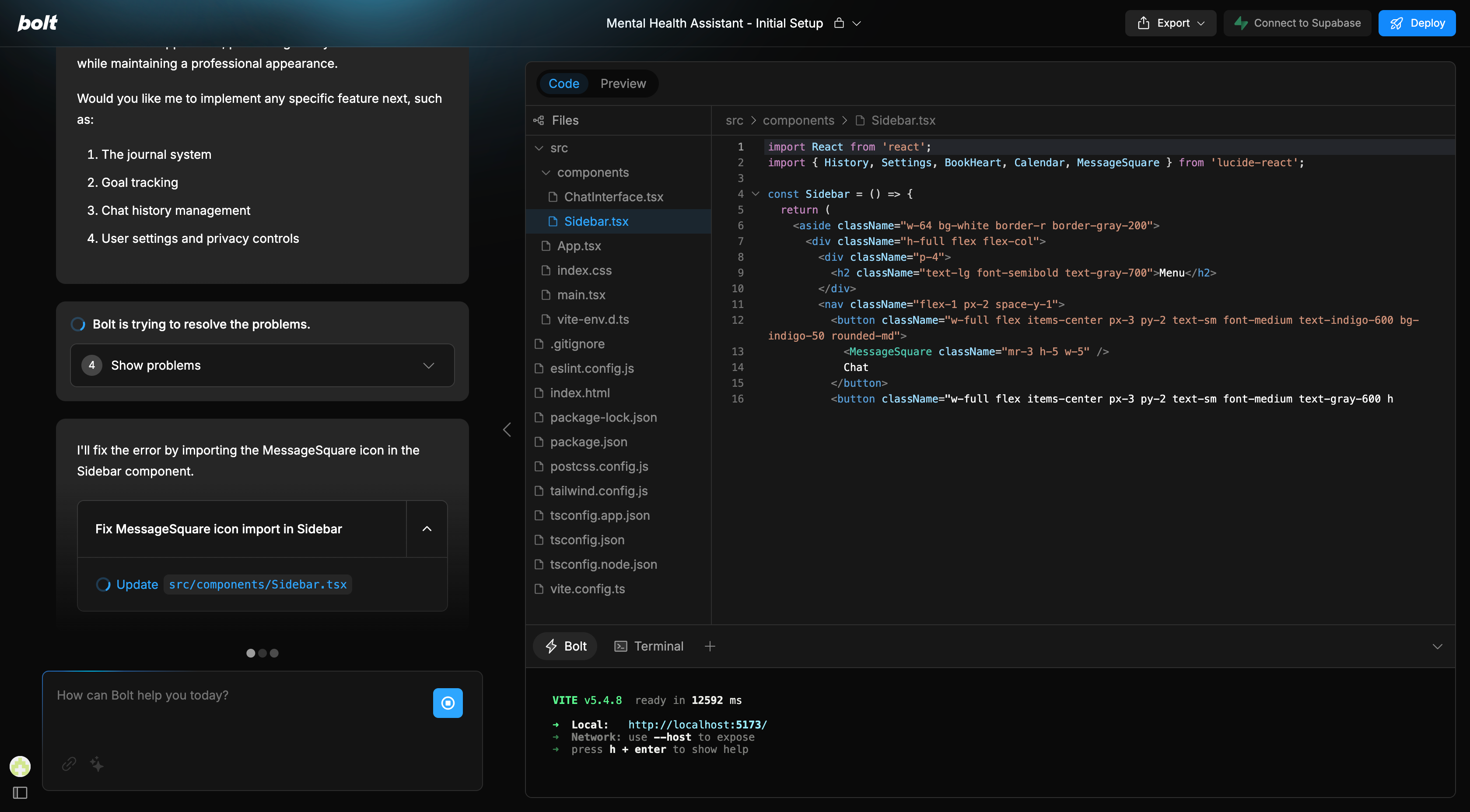
Token-Based System
Bolt.New operates on a token-based pricing model, which can create challenges for users. Each interaction with the platform consumes tokens, and this can quickly add up during complex app development. For example, if you are building a feature-rich app, the rapid token consumption may lead to higher costs, making the tool less economical for long-term use.
Additionally, the browser-based environment of Bolt.New limits its scalability. While it simplifies app development for smaller projects, advanced development often requires migration to traditional environments. This platform lock-in can hinder your ability to scale or retain flexibility for enterprise-level projects.
Context Limitations
Bolt.New struggles to maintain full context during code generation, especially for larger projects. If you are working on an ongoing build, the tool may lose track of previous instructions or fail to integrate new changes seamlessly. This can disrupt your workflow and require additional effort to manage context manually. For business automation tasks or apps with intricate logic, this limitation can become a significant hurdle.
Tip: To mitigate context issues, break your project into smaller, manageable tasks. This approach helps the tool process your requirements more effectively.
Code Quality for Complex Projects
When it comes to complex app development, Bolt.New faces several challenges. Users often report performance issues, such as sluggish responses and long wait times between prompts. If you are implementing advanced functionality, the tool may produce errors or suggest suboptimal solutions. This can slow down your progress and require manual intervention to fix the issues.
Some common challenges include:
Performance issues: The tool often feels slow, with delays between actions.
Difficulty with complex tasks: Advanced features may result in errors or incomplete implementations.
These limitations make Bolt.New better suited for rapid prototyping or smaller-scale projects. For larger or more complex apps, you may need additional tools or platforms to ensure high-quality results.
Limited Customization
Users often find it challenging to modify complex user interfaces or integrate extensive backend functionalities.
For instance, if your app requires detailed backend integrations or advanced database configurations, Bolt.New might feel restrictive. The platform also struggles to maintain full context during lengthy builds, which can disrupt your workflow.
Backend Integrations: Bolt.New’s capabilities may not support complex backend requirements effectively.
Context Limitations: Larger projects often face challenges with maintaining continuity, especially during long development sessions.
These limitations make Bolt.New better suited for rapid prototyping or smaller-scale projects. If your app demands high levels of customization or stability, you might need to explore alternatives like Momen, which offers more robust options for editing and deployment.
Pricing of Bolt.New
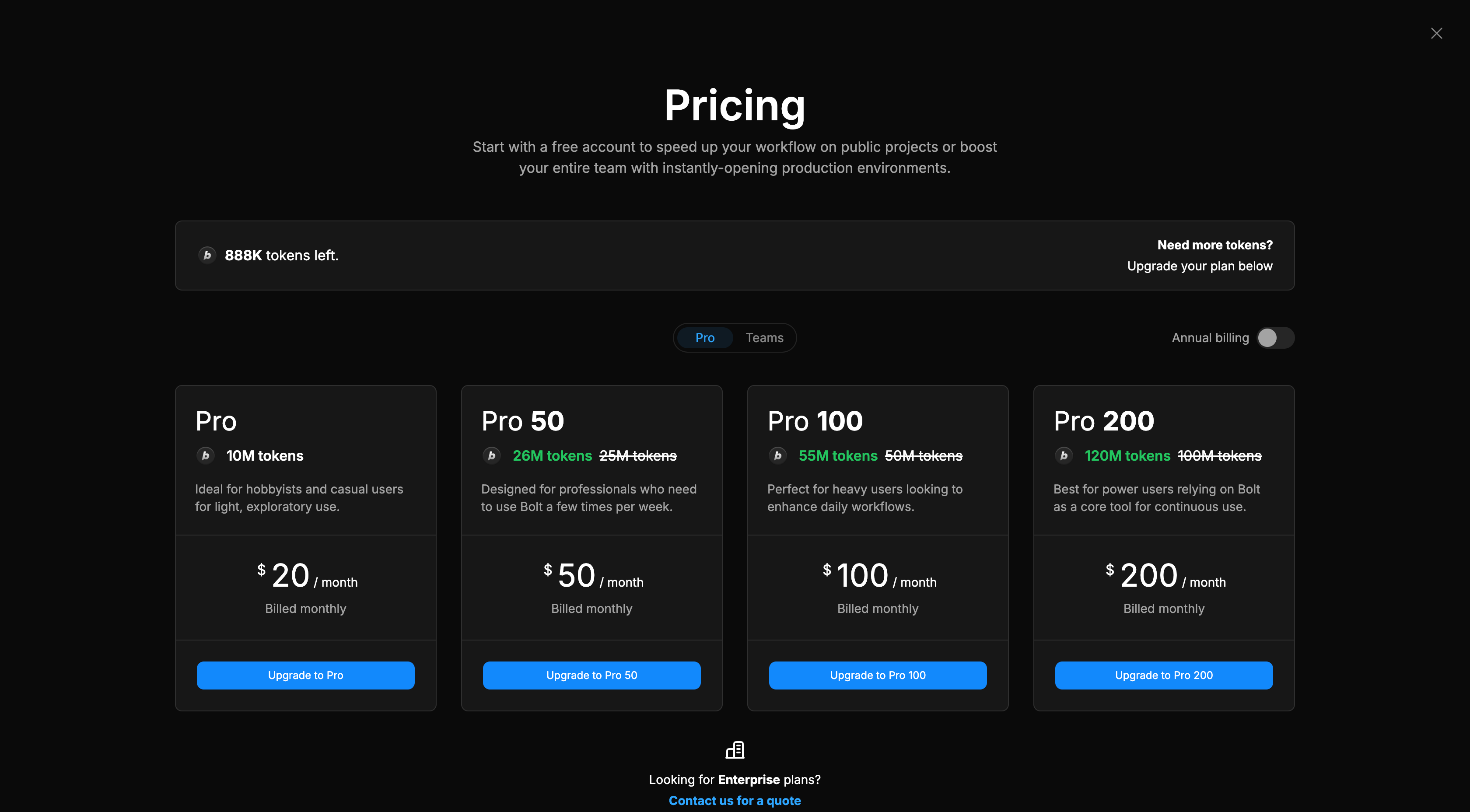
Bolt.new offers a range of subscription plans based on token usage, which determines how much AI interaction you can have. The pricing is structured to cater to different levels of usage, from light exploratory use to heavy, daily development.
Simple Pro: $20 per month, offering 10 million tokens, suitable for light exploratory use.
Pro 50: $50 per month, with 26 million tokens, ideal for use a few times per week.
Pro 100: $100 per month, providing 55 million tokens, designed for daily usage.
Pro 200: $200 per month, with 120 million tokens, for heavy use as a core tool.
When evaluating Bolt.New's pricing, consider several factors to ensure it fits your needs:
Fee Structure: Analyze how the token-based system impacts your budget, especially for complex or long-term projects.
Return on Investment (ROI): Assess whether the features provided justify the cost, particularly for rapid prototyping or smaller apps.
Operational Efficiency: Determine if the platform's AI-driven tools save enough time and effort to offset the expense.
Scalability: Think about whether the pricing model supports your growth, especially if you plan to scale beyond Bolt.New's capabilities.
Who Should Use Bolt.New?

Bolt.New is an excellent choice for a wide range of users, especially those seeking a fast and efficient way to build applications. This tool simplifies the development process, making it accessible even to individuals with minimal technical expertise.
Ideal Users for Bolt.New:
Have a clear idea of what they want to build and can articulate it through prompts.
Value speed and AI assistance in web development, particularly for prototyping and early-stage projects.
Are comfortable with potential errors or inaccuracies in AI-generated code and are willing to iterate or make adjustments.
Do not require highly complex or custom features that may exceed the platform's current capabilities.
Are willing to pay for a subscription plan based on their token usage, given the pricing structure (e.g., Simple Pro at $20 for 10 million tokens, as noted in previous research).
For non-technical users, Bolt.New offers a unique advantage. You can build web applications from concept to live deployment in minutes using natural language prompts. This capability eliminates the need for complex coding or setup, allowing you to focus on your app's purpose rather than its technical details.
Bolt.New is particularly effective for MVP prototyping. If you need to test an idea or showcase a concept, this AI-powered tool provides the speed and simplicity you need. Its ability to generate code and deploy apps in real-time makes it a valuable resource for small-scale projects.
However, for larger or highly customized applications, you might want to explore alternatives like Momen. Momen offers more robust no-code solutions that are better suited for more complex, real-world applications that require flexibility and advanced customization.
Alternative: No-Code Platforms
No-code platforms are a strong alternative to Bolt.New, especially for users looking for simplicity, versatility, and ease in app development. These platforms eliminate the need for coding, enabling users to create functional apps using intuitive interfaces, drag-and-drop features, and easy-to-use tools. Platforms like Momen are great examples, offering robust solutions to build everything from e-commerce websites to custom dashboards.
Why Choose No-Code?
No-code platforms emphasize ease of use and adaptability, making them ideal for both beginners and experienced developers. These platforms allow users to skip complex setups and start building apps right away. Features like real-time error detection, customizable interfaces, and drag-and-drop functionality make app creation more accessible, letting you focus on creativity rather than technical challenges.
In contrast, Bolt.New requires at least some coding knowledge to build more complex apps and address errors. While it offers flexibility, using frameworks within Bolt.New can be time-consuming, requiring learning and troubleshooting. No-code platforms, however, eliminate this need for coding and offer a more intuitive approach.
Comparing Bolt.New and No-Code Platforms
Bolt.New is great for rapid prototyping and AI-assisted web development. You can create functional apps within minutes, making it ideal for testing ideas and developing prototypes. However, for long-term projects that require scaling, advanced customization, and monetization, Bolt.New may not provide enough flexibility.
No-code platforms like Momen offer more robust solutions for complex designs and backend functionalities. They provide more control over customization, deployment options (local or cloud), and allow for more feature-rich applications. While Bolt.New relies on AI for managing the development environment, no-code tools give you greater control over app customization and scalability.
Bolt New offers a powerful solution for rapid app development, especially for users seeking speed and simplicity. Its AI-driven features, such as automated package management, one-click deployment, and full-stack development in the browser, make it a standout choice for prototyping and smaller projects. You can quickly create functional apps without worrying about complex setups or configurations. According to Statista, 82% of developers now use AI tools, and Bolt New aligns with this trend by streamlining workflows and enhancing productivity.
However, you should consider its limitations before committing. Challenges like limited backend integrations, occasional stability issues, and struggles with maintaining context in large projects may hinder its suitability for complex applications. Despite these drawbacks, Bolt New excels in empowering non-technical users and startups to test ideas quickly and iterate efficiently.
If you need a tool for prototyping or small-scale projects, Bolt New could be the right fit. Its user-friendly interface and AI-assisted coding make it accessible for both beginners and experienced developers. Start with the free tier to explore its features and determine if it meets your needs.
FAQ
What types of projects is Bolt.New best suited for?
Bolt.New works best for rapid prototyping and small-scale projects. Its AI-driven features allow you to create functional apps quickly. However, it may not handle large-scale or highly customized applications effectively due to limitations in backend integrations and performance.
Can non-technical users build apps with Bolt.New?
Yes, Bolt.New is designed for non-technical users. You can describe your app idea using natural language prompts, and the platform generates the code for you. This makes it accessible even if you have no coding experience.
Tip: Start with the free tier to explore its features risk-free.
Does Bolt.New support popular frameworks?
Yes, Bolt.New supports frameworks like React, Vue, and Tailwind CSS. These integrations help you create modern, responsive applications. However, its customization options may feel limited for advanced projects requiring extensive backend work or unique designs.
Is Bolt.New cost-effective for long-term use?
Bolt.New’s token-based pricing can become expensive for complex or long-term projects. Each interaction consumes tokens, which adds up quickly. Evaluate your project’s scope and budget before committing to a paid plan. For larger projects, consider alternatives like Momen for better scalability and cost efficiency.
Is Lovable The Best AI App Builder For Your Needs?
Discover 10 Cutting-Edge AI App Builders For 2025
Five Leading AI App Builder Tools To Use Instead Of Vercel

